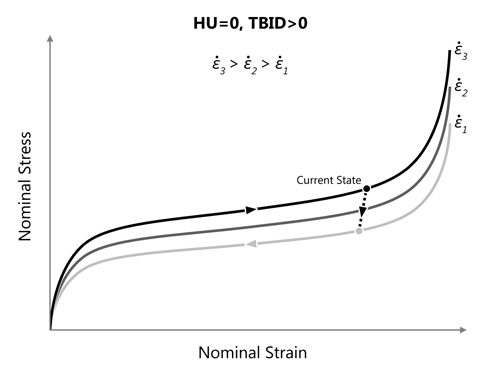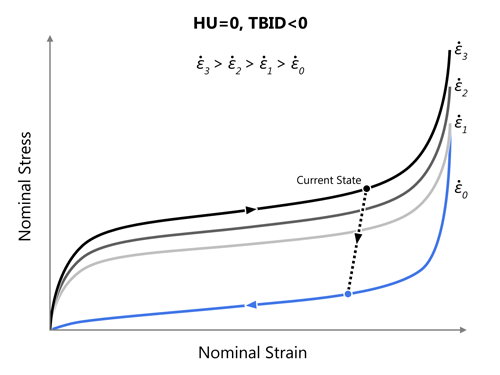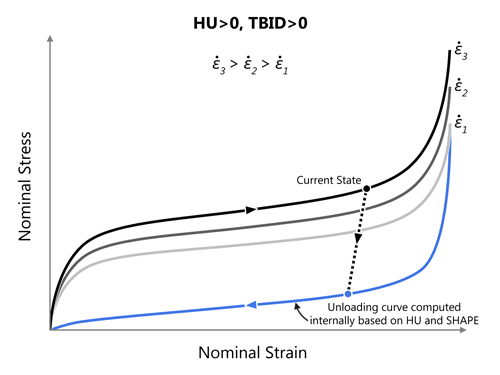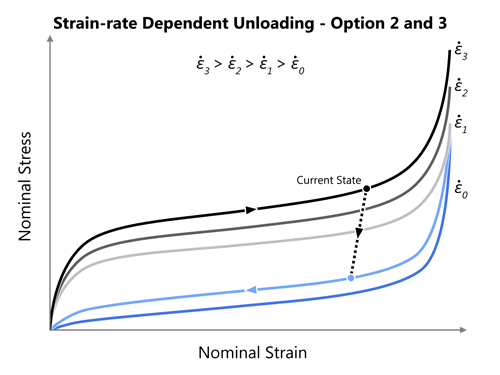There are three different ways to model unloading behavior when using material model MAT_083. They are graphically depicted below (these figures may appear in the next release of the LS-DYNA keyword and theory manual).
Option 1 – Default (Click image to enlarge)
In the default option (1), HU=0, and the table is positive which then refers to a series of loading curves. Unloading in this case is then to the loading curve that corresponds to the lowest strain-rate. There is also no rate-dependency so unloading will always occur along the curve that corresponds to the lowest strain-rate (quasi-static or nearly zero).

Option 2 (Click image to enlarge)
In this option, HU=0 and a negative id for the table definition (TBID) will indicate LS-DYNA that first two curves corresponding to the first to strain-rate values in the ascending order forms a closed loop definition and unloading will then occur along the curve that corresponds to lowest strain-rate value.

Option 3 (Click image to enlarge)
In this option, no unloading curve is provided by the user but the unloading curve parameters HU and SHAPE is defined which allows LS-DYNA to compute the unloading curve internally much like what is done in the MAT_LOW_DENSITY foam.

Options 2 and 3 allow for strain-rate dependent unloading and this is shown below.
Strain-rate Dependent Unloading in Option 2 and 3 (Click image to enlarge)















